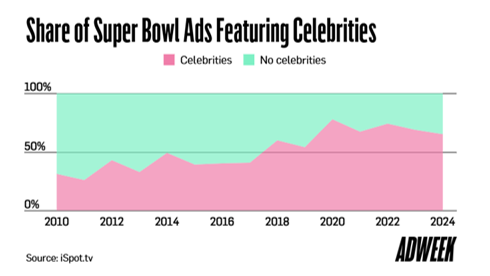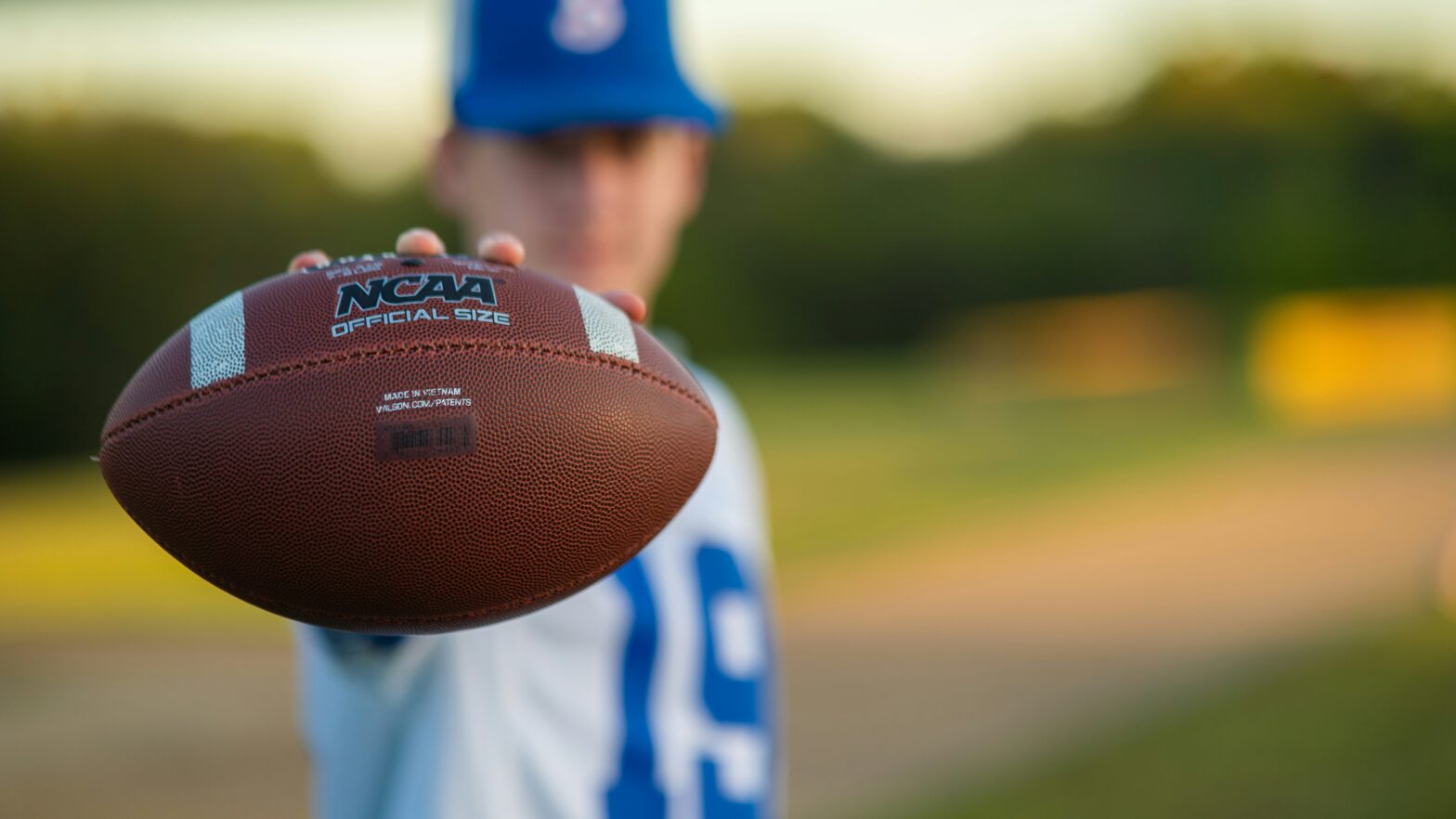In 2010, only about one-third of Big Game spots included a well-known actor, athlete, or musician, according to television analytics firm iSpot.tv. This changed in 2018, when famous faces appeared in the majority of Super Bowl ads. It’s been that way ever since, and experts say there’s good reasoning behind the ongoing trend.

What’s with all the celebrities?
First of all, brands are businesses. If putting celebrities in their Super Bowl campaigns didn’t work, they’d either change course or go bankrupt, especially when it costs $8 million for 30 seconds of airtime.
And figures suggest the strategy works. Data from creative effectiveness platform System1, which measures viewers’ emotional response to ads, shows Super Bowl commercials with celebrities tend to perform slightly better than those without them. This applies to both generating long-term brand growth, when used consistently with a recurring spokesperson, and short-term sales bumps.
“People have strong feelings about celebrities, so you’re going to get that immediate recognition,” said Vanessa Chin, svp of marketing at System1.
“If you use a celebrity well, and they’re associated with your brand, then you’re going to get that strong spike. Ultimately, the effectiveness of celebrity endorsements in Super Bowl ads hinges on thoughtful execution and alignment with the brand’s message.”
“Celebrities are great for attention capture, which is big right now because there’s so much clutter,” said Christie Nordhielm, a professor of marketing at Georgetown University. “Snoop Dogg is way more interesting than T-Mobile.”
At the same time, Nordhielm added, brands need to be careful about the celebrity overshadowing them. If viewers remember seeing a famous actor or musician in a commercial, but can’t remember the good or service being advertised, that isn’t ideal.
More and more, however, the battle to attract eyeballs is taking place on the internet well before kickoff. In this sense, having a famous person with millions of online followers on your side is a sure-fire way to generate instant buzz compared to a commercial that, no matter how brilliant, relies on a good idea alone.
“Unless there’s something really unique about the creative, it does get harder to amplify prior and get people excited,” said Marc Ippolito, president of Burns Entertainment, a celebrity marketing agency that worked on a handful of this year’s ads. “There’s got to be something, because it’s the Super Bowl and everyone is expecting something big and over the top.”
“If most of those celebs are people Gen Z doesn’t know, the impact is definitely lost,” said MaryLeigh Bliss, chief content officer at market research firm YPulse, who noted shoppers aged 13 to 39 years old are around four times more likely to feel compelled to buy something promoted through an ad on TikTok than an ad on linear television.
“In general, TV ads just aren’t as likely to reach and impact young consumers as ads on social media,” Bliss added.
“You wouldn’t advertise to millennials or Gen Z on television right now, but the Super Bowl is the one event that every generation is watching,”
said Doug Shabelman, CEO of Burns Entertainment.
As for the growing number of celebrities in Super Bowl ads, this year’s broadcast appears poised to continue the trend. Payton Manning, for example, appears in Bud Light’s spot alongside Post Malone and Shane Gillis. The commercial for Uber Eats involves a handful of famous faces, including Matthew McConaughey, Kevin Bacon, Charli XCX, and, yes, Martha Stewart.
Source: adweek.com

